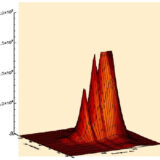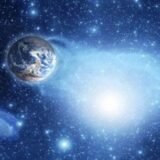“La misión Gaia. Una máquina de descubrimientos” (Congreso Estatal de Astronomía, Granada, 2 May 2014)
Conference: XXI Congreso Estatal de Astronomía (Granada, 2 May 2014) Title: “La misión Gaia. Una máquina de descubrimientos” Emission date: 2 May 2014 Link to the video of the talk given by F. Figueras during the XXI Congreso Estatal de Astronomía (Granada, 2 May 2014), giving an overview of the Gaia mission. Here you have the video of her talk (in spanish).
read moreGaia in your pocket (1 Sep 2014)
Media: Gaia ESA blog and news Title: “Opening (activating) the gates of Gaia” Links: Gaia blog Publication date: 1 September 2014 GAIA IN YOUR POCKET – MAPPING THE GALAXY WITH THE NEW GAIA APP Mapping one billion stars in our Galaxy may seem like an impossible feat, but that’s exactly what ESA’s Gaia mission aims to do, with the ultimate goal of creating the largest, most precise 3D map of our Galaxy ever made. And now you can follow the mission’s progress with a new app created by the University of Barcelona. Being able to track the progress of this groundbreaking...
read moreGaia first discovery: surprise space debris
Original link: New Scientist A robotic galaxy mapper may have just made its first discovery – by surviving an unexpected onslaught of space debris. Scientists working with the European Space Agency’s Gaia satellite have found that the spacecraft is being peppered by far more micrometeoroids – tiny specks of space dust – than had been anticipated. The strikes shouldn’t put Gaia in danger, although mission scientists will have to watch closely as the spacecraft begins its scientific observations. And the discovery might spell trouble for future spacecraft headed to the same orbital...
read moreOpening (activating) the gates of Gaia (14 Jul 2014)
Media: Gaia ESA blog and news Title: “Opening (activating) the gates of Gaia” Links: Gaia blog and news Publication date: 14 July 2014 OPENING (ACTIVATING) THE GATES OF GAIA The huge Gaia focal plane consists of 106 CCDs. As you may know already from previous blog entries Gaia will fly the biggest camera ever into space. The image created by the two telescopes will be huge: about 1 m wide and 0.5 m high. To cover this entire area you need 106 different CCDs (detectors). Most of them are white light CCDs. Additionally there are blue sensitive (BP) and red...
read moreRaising Gaia, Europe’s Brainchild (El País, 4 July 2014)
Newspaper: El País Title: “Raising Gaia, Europe’s Brainchild” Webpage: elpais.com Publication date: 4 July 2014 Raising Gaia, Europe’s Brainchild By Xavier Luri Carrascoso, University of Barcelona Working on a space mission is a bit like raising children: it takes years, patience and some suffering, but it is also very rewarding. For me parenthood and the work on a space mission started around 2001, when my wife, Isabel, gave birth to our daughter Ana and the European Space Agency (ESA) approved the Gaia mission. Gaia’s main goal is to measure the distance to one billion...
read more








